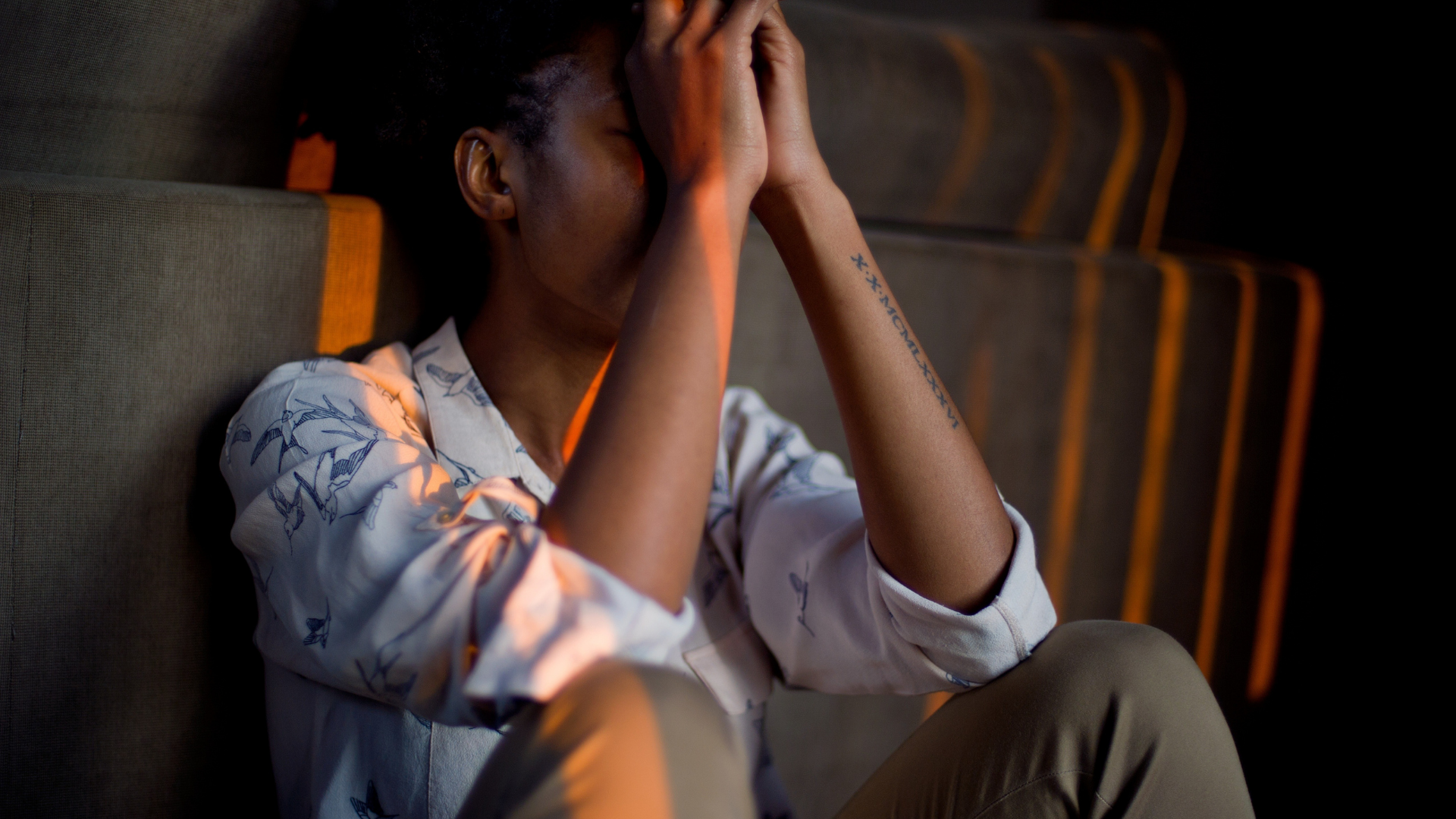Woman feeling her feelings.
Okay, now that we’ve got some of the mindfulness basics down, we’re going to dive right into the fun mindfulness stuff.
FEELINGS AND EMOTIONS!!!
A big misconception we all have is that feelings are emotions and emotions are feelings. Even after years of talking about them, I still use them interchangeably (And probably still don’t fully understand the difference.) so it’s understandable that there’s confusion.
“Feelings are physical sensations. ”
All of us therapists are guilty of repeatedly urging people to feel their feelings. What we actually mean by this is to pay attention to (aka feel) the physical sensations in our bodies. Feelings are physical sensations. Examples of feelings are tingling in our fingertips, tightness in our chest, butterflies in our stomach, the ache in our head, stiffness of our neck, an expansion of our heart, the buzzing in our foot when it falls asleep from sitting on it for too long.
Now these feelings or physical sensations can be pleasant or unpleasant, comfortable or uncomfortable. This leads to preferring some feelings over others and do most anything we can to avoid the ones we don’t particularly enjoy.
And emotions are simply labels for a collection of feelings (physical sensations). It’s a short hand to communicate to ourselves and others our experience.
Man afraid on flight.
For example, the physical sensations of being out of breath, having a racing heartbeat, feeling a lump in the throat, tensing up, clenched jaw, and clamminess or hairs standing on end all together indicate the emotion of fear. We’re afraid when we experience those sensations collectively.
And for the most part, everyone experiences fear the same way. Everyone experiences every emotion in the same way actually. Regardless of culture, race, ethnicity, gender, etc., etc., etc. Because our biological responses to certain stimuli are hard wired into us. There may be some slight variations, but overall we know what it’s like for someone when they say they’re afraid.
Okay, fine, the definition of feelings and emotions are different. But why is any of this important?
“Feelings don’t actually go away if we ignore them. ”
Because being mindful of our emotions, of what’s going on inside of our bodies, starts with feeling our feelings. We have to notice and be present with those physical sensations, whether pleasant or unpleasant, because when we are, our feelings move through us, rather than getting stuck, communicating important information to us so we can navigate life much more easily and effectively.
If we avoid them because they’re uncomfortable, push them away, or get stuck in them, that’s when life becomes more difficult.
Feelings don’t actually go away if we ignore them.
It might seem like it. For a minute. But they always come back louder and stronger. Over and over again. Until we’re forced to deal with them. Usually because they’ve wreaked some havoc in our lives. Ruined relationships. Caused us to lose a job. Damaged our health. Maybe all of the above.
Ignored Emotions Trying to Get Attention
As I shared in The Dark Side of Mindfulness, if there was a zombie apocalypse and someone was trying to get away from the zombies and knocking on your door, they aren’t going to simply go away because you don’t answer. They’re going to keep knocking, louder and faster, because it’s really important that they get your attention. And luckily, while it isn’t usually life or death with emotions, they are still trying to communicate important information to us so they will get louder and more frequent until we pay attention to them to what they’re telling us.
I’ll be sharing a lot more about emotions and how to be mindful of them because it’s so incredibly important and also the absolute last thing most of us want to do. So please subscribe to this blog if you’d like to be the first to know when a new post is ready to be read.



